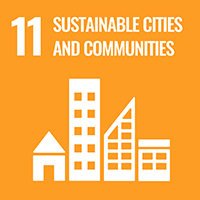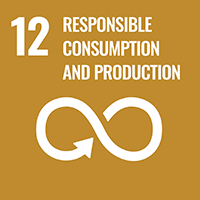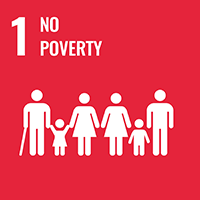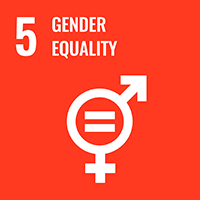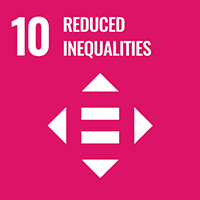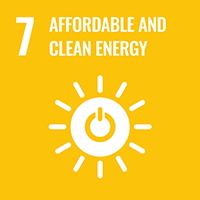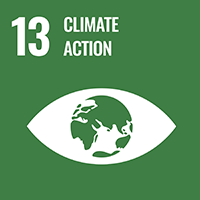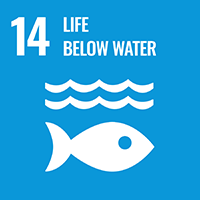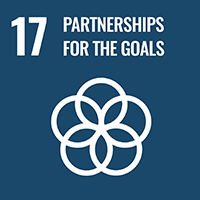Sustainability Policy
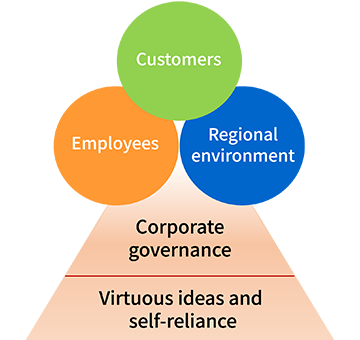
Based on our corporate philosophy of “virtuous ideas” and “self-reliance,” we will aim to meet the wide-ranging needs of society and our customers and be a company that shares in happiness and is genuinely trusted in society by bringing joy to our customers, letting our employees shine, and growing together with the community.
Promotion framework
Sustainability governance and risk management
In April 2022, we established a Sustainability Committee , chaired by the President, Chief Executive Officer and composed of management meeting members (executive directors, full-time Audit and Supervisory Committee members, general managers of each department, and Presidents of subsidiaries). This committee plans and implements action items, evaluates the previous fiscal year’s action plan, regularly reports and makes recommendations to the Board of Directors with respect to its deliberations, and reports to the Risk Management Committee as necessary.
The Board of Directors and the Risk Management Committee discuss and oversee mainly measures and action items based on the reports and recommendations received from the Sustainability Committee.

- Organization chart (as of May 27, 2025)
Key Issues (materiality)
Having examined the social issues affecting Okinawa Prefecture, as well as issues in the Group’s business, and then ordering them according to priority, we identified six key issues (materiality).
| Happiness of customers |
|
|---|---|
| Happiness of employees |
|
| Happiness in the community and the environment |
|
Major Initiatives
| Key Issues (materiality) | Action Items | Relevance to the SDGs | |
|---|---|---|---|
| Happiness of customers |
Providing environmentally friendly products and services that enrich customers |
|
|
| Providing safety and security through product supply and store development |
|
||
| Happiness of employees |
Driving the active participation of diverse human resources and creating comfortable workplace environments |
|
|
| Providing learning opportunities and creating a rewarding workplace |
|
||
| Happiness in the community and the environment | Building a decarbonized and circular society |
|
|
| Contributing to regional development and creating a safe and secure society |
|
Development of environmentally friendly stores
As part of our efforts to address the key issue of building a decarbonized and circular society, we are promoting the development of environmentally friendly stores.
Reducing energy consumption through the adoption of solar panels and high-efficiency equipment
We have installed solar power generation equipment on the roofs of nine stores, with the generated renewable energy used on-site.
In addition, we have switched to environmentally friendly refrigerant equipment in 16 grocery stores and to in-store LED lighting across all stores.
Going forward, we will promote the development of environmentally friendly stores.

SAN-A Nakagusuku Store

SAN-A grocery store V21 Samashita
SAN-A grocery store V21 Makiminato receives Nearly ZEB*1 certification
SAN-A grocery store V21 Makiminato received Nearly ZEB*1 certification in January 2025.
SAN-A grocery store V21 Makiminato has improved energy efficiency by generating and using renewable energy on-site, while minimizing consumption through the adoption of high-efficiency air-conditioning equipment along with the installation of solar power generation equipment.
Additionally, we will control the air conditioning systems within the facility by integrating BEMS*2 equipment with the systems’ centralized remote controllers, aiming to further enhance energy savings through functions such as reducing peak power usage and scheduling in response to power demand.
*1 Nearly ZEB (Net Zero Energy Building)
A building that reduces primary energy consumption by at least 75% through energy savings (at least 50%) and on-site energy generation, while maintaining a comfortable indoor environment
*2 BEMS
Building Energy Management System
A building management system that uses IT to control lighting and air conditioning in commercial buildings for enhanced energy management, aiming to optimize indoor environments and energy efficiency

Urasoe West Coast PARCO CITY wins METI Minister’s Award
The energy conservation and CO₂ reduction initiatives at SAN-A Urasoe West Coast PARCO CITY, conducted in collaboration with SAN-A CO., LTD., Reliance Energy Okinawa Inc., and TAKENAKA CORPORATION, received the highest recognition, the Minister of Economy, Trade and Industry Award, Business Sector, at the 2022 Energy Conservation Grand Prize (Energy Conservation Best Practice Category), sponsored by the Energy Conservation Center, Japan. This marks the first time a company in the prefecture has earned this distinction.
<Award overview (The Energy Conservation Center, Japan)>
- Awarded initiative: Leading Initiatives in Energy Conservation and CO₂ Reduction at Large Commercial Facilities in Okinawa
- Award overview
Pioneering technologies have been adopted and implemented at SAN-A Urasoe West Coast PARCO CITY, one of the largest commercial facilities in Okinawa, to maintain a comfortable in-store environment while achieving energy conservation and CO₂ emissions reduction.
Efforts encompassed a wide range of areas, including the construction of a high-efficiency air-conditioning system with separation process of sensible and latent heat using outdoor air handling units with self-reheating, a skylight system that directly utilizes sunlight, and daylight-responsive lighting controls.
Operational measures include staggered startup of store air-conditioning systems, seasonal adjustments to the operating patterns of fixed-speed and inverter units, monthly load forecasting using BEMS data, and the preparation of operation plans and performance analyses based on these estimates.
As a result, annual primary energy consumption decreased by approximately 40% compared with the benchmark for typical commercial facilities, based on actual fiscal 2021 figures, with an energy use intensity of 2,059 MJ/m2 per year.
The initiatives in Okinawa with its harsh weather conditions were honored for pioneering energy conservation and renewable energy measures that address its natural environment.
Climate Change Initiatives
We disclose information in line with the recommendations of the Task Force on Climate-Related Financial Disclosures (TCFD).
Climate change governance and risk management are integrated into overall sustainability governance and risk management.
Strategy
We take very seriously the increase in the average global temperature driven by climate change, as well as the associated changes and risks of disasters in society. We are therefore taking measures to fight climate change. As part of our measures, we have identified short-term, medium-term, and long-term risks and opportunities brought about by climate change and conducted a scenario analysis.
For our analysis, we referenced both the 1.5°C scenario and the 4°C scenario. We have taken into account the expectations of the international community to pursue efforts to limit the global average temperature increase to 1.5°C above pre-industrial levels, as seen in the Intergovernmental Panel on Climate Change’s (IPCC) Sixth Assessment Report and the Conference of the Parties to the United Nations Framework Convention on Climate Change (COP).
In 2023, referencing reports from governments and international agencies regarding future forecasts, we conducted an exhaustive review of the transition risks (policy and regulatory, market, reputation), physical risks (acute, chronic), and opportunities (products and services, markets, resilience) arising from the appropriate measures taken to fight climate change.
Scenario assumptions
| Risk type | Established scenarios | Referenced scenarios | Summary |
|---|---|---|---|
| Transition risks | 1.5°C scenario | Net Zero Emissions by 2050 Scenario (NZE Scenario) in the International Energy Agency’s (IEA) World Energy Outlook 2022 | A scenario in which the average temperature increase through to the end of the 21st century is limited to less than 1.5°C. To achieve sustainable development, ambitious policies and technological innovation are needed, which may lead to significant societal changes accompanying the transition to a decarbonized society, potentially impacting business. |
| Physical risks | 4°C scenario | SSP5-8 Scenario of the IPCC’s Sixth Assessment Report (AR6) Ministry of the Environment’s “Results of the Impact Assessment Regarding Intensification of Disasters Due to Climate Change: Typhoons in the Future with More Advanced Global Warming” |
A scenario in which the average temperature increase through to the end of the 21st century is around 4°C. Leaving things mostly to chance is unlikely to bring about changes in society, but the possibility of abnormal weather events and disasters associated with climate change affecting business will increase. |
Scope of scenario analysis
| Item | Scope of scenario analysis |
|---|---|
| Region | Japan (Okinawa Prefecture) |
| Businesses | Retail businesses (including entire upstream and downstream supply chains) |
| Companies | All consolidated companies |
| Definition of time horizons | Short term (2023 to 2026), medium term (around 2030), and long term (around 2050) |
| Calculation method | Estimate of financial impacts in a single year as of 2030 |
Results of scenario analysis
[Risks]
| Risk type | Category | Risk | Time horizon | Impacts | Severity |
|---|---|---|---|---|---|
| Transition risks |
Policies and regulations | Introduction of a carbon tax | Medium term |
|
Large |
| Tighter regulations on raw materials for products | Medium-to-long term |
|
Medium | ||
| Expanded scope of mandatory information disclosure | Short term |
|
Medium | ||
| Technologies | Delays in the adoption of energy-saving and low-carbon technologies | Medium-to-long term |
|
Large | |
| Markets | Changes in the energy mix and demand | Short-to-medium term |
|
Large | |
| Changes in customer behavior | Medium-to-long term |
|
Medium | ||
| Reputation | Reduced popularity among customers | Medium-to-long term |
|
Medium | |
| Physical risks |
Acute physical | Damages caused by typhoons, torrential rainfall, and other natural disasters | Short-to-medium term |
|
Large |
| Payment of natural disaster-related insurance premiums | Short-to-medium term |
|
Medium | ||
| Chronic physical | Food shortages due to crop failures | Short-to-medium term |
|
Large | |
| Skyrocketing electricity costs owing to increased use of air conditioning | Short-to-medium term |
|
Large |
[Opportunities]
| Category | Risk | Time horizon | Impacts | Severity |
|---|---|---|---|---|
| Resource efficiency | Changes in customer behavior | Medium-to-long term |
|
Medium |
| Reduction in environmental impacts of stores | Short-to-medium term |
|
Large | |
| Efficiency in production and distribution processes | Medium-to-long term |
|
Medium | |
| Energy sources | Utilization of low-carbon energy sources | Medium-to-long term |
|
Medium |
| Products and services | Higher sales driven by sustainable product sales | Medium-to-long term |
|
Medium |
| Growth in demand for disaster prevention and disaster countermeasure products | Medium-to-long term |
|
Medium | |
| Need for products to combat the average temperature increase and extreme heat | Medium-to-long term |
|
Medium | |
| Resilience | Provision of emergency relief supplies during times of disaster | Medium-to-long term |
|
Medium |
Disclosure of financial impacts: Introduction of a carbon tax
| Financial impact | Approximately ¥2.7 billion |
|---|---|
| Calculation method | *Source: IEA NZE Scenario: US$140/t-CO2 *Calculation based on FY2030 Scope 1 and 2 emission targets. Assuming all of the Company’s Scope 1 and 2 emissions in the most recent year are subject to the carbon tax. |
Metrics and indicators
With a view to realizing a sustainable society, we have established, and continue to manage, environmental indicators, including greenhouse gas emissions. We have set a target of reducing our Scope 1 and 2 emissions by 40.0% by 2030 compared to 2017, in order to approach the global objective of holding the increase in the global average temperature to less than 1.5°C.
Scope 1 and 2 emissions (t-CO2)
| Classification | Definition | Base year (FY2017) |
Most recent year (FY2024) |
|
|---|---|---|---|---|
| Emissions | Emissions | Rate of reduction (vs. base year) |
||
| Scope 1 | The business operator’s own emissions (combustion of gasoline, LPG, and other fuels, as well as leakage of CFCs) |
36,125 | 21,786 | 39.7% |
| Scope 2 | Indirect emissions from energy supplied by other companies (use of electricity/heat) |
175,758 | 139,262 | 20.8% |
| Total of Scopes 1 and 2 | ― | 211,883 | 161,048 | 24.0% |
- *Period of calculation: Same as fiscal year (March to February)
- *Scope of calculation: Consolidated SAN-A Group companies
- *Market-based values used for Scope 2 emissions
Please note that we intend to gradually gain an understanding of Scope 3 emissions and take steps to reduce them with the cooperation of our stakeholders.
Human Capital Initiatives
(1) Human capital management and basic strategies
We believe the Group’s purpose in society is to safeguard people’s lives as a community lifeline and contribute to the development of the community.
We will work on developing human resources to achieve long-lasting corporate management, aiming to be a company that shares in happiness and is genuinely trusted in society by bringing joy to our customers, letting our employees shine, and growing together with the community.
We will make appropriate investments to develop an environment where a diverse workforce can autonomously grow and unleash its full potential, contributing to both sustainable corporate growth and enhanced social value. To this end, we will advance the two priority policies in human capital management, as outlined below.
<Human resource development policy>
One of the SAN-A Group’s strengths is its human resources. We believe that instilling our corporate philosophy in our employees is key to achieving long-lasting corporate management.
In our recruitment activities, we carefully tell them about our viewpoint and history, and aim to recruit individuals who resonate with our philosophy. Even after they join the Company, we focus on educating them to instill our philosophy throughout the organization to promote the development of an environment where the value of human capital can be maximized.
<Internal environment development policy>
We have continuously addressed various challenges in the human resources domain through personnel improvement meetings composed of directors and general managers of each department since 2001, with the aim of creating a comfortable workplace environment where all employees can unleash their full potential.
Key achievements to date include: enhanced employee benefits based on a fair performance evaluation system; increased annual paid leave emphasizing work-life balance; reduced overtime hours through productivity improvements and operational process optimization; and extended average years of service due to a better working environment.
Furthermore, we are strengthening mental health measures and improving operational efficiency through the use of IT, alongside enhancements to personnel systems. While cherishing the values the Group prioritizes, we are committed to harmonizing employees’ sense of fulfillment with a conducive working environment.
(2) Specific initiatives
a. Enhancing the capabilities of human resources
1) Training sessions
Recognizing that developing human resources who deeply understand and embody corporate philosophy is key to achieving long-lasting corporate management, we conduct philosophy education and practical training (including study visits within and outside of Okinawa and analysis-based study sessions) for all of our employees, including regular employees, partner employees, and casual staff.
By strengthening both the mindset of employees through philosophy education and skills through practical training, we are committed to developing human resources for long-lasting corporate management.
The results of training initiatives for the fiscal year ended February 28, 2025 are as follows:
| Training content | No. of training sessions | Total participants |
|---|---|---|
| Training sessions for partner employees | 143 | 3,220 |
| Tokyo metropolitan area study visits for grocery store managers | 3 | 71 |
| Tokyo metropolitan area study visits for management employees | 3 | 85 |
| Study visits to production areas and factories | 31 | 334 |
| Other level-specific training | 48 | 1,482 |
| Total | 228 | 5,192 |
2) Human resource development
- Introduction of talent management system
In March 2024, we introduced a talent management system to centrally manage information on employees’ capabilities and skills, and to support strategic human resource assignment and development, thereby maximizing human capital.
- Recruitment
As part of human resource development efforts to support the organization’s sustainable growth, we have actively promoted partner employees and casual staff to regular employees, in parallel with hiring new graduates.
In addition, with the aim of enhancing adaptability to a rapidly changing social environment, we resumed mid-career hiring in January 2024 to actively bring in human resources with diverse experience and expertise.
Moving forward, we will accelerate our efforts to recruit and train a diverse workforce, aiming to enliven the entire organization and achieve business growth.
| Mid-career hiring results | Fiscal year ended February 28, 2025 |
|---|---|
| Number of recruits | 39 |
| Percentage of mid-career recruits | 31.0% |
- Discovery and nurturing of next-generation leaders
In 2023, we established the Human Resource Development Committee in order to discover and nurture the next generation of leaders and successors.
Starting in 2024, we are launching an initiative presentation program for A-level management employees who hold positions of leadership in the Company. With this program, we aim to discover young human resources and invigorate the management team by linking it to the performance evaluation system.
- Internal job-posting scheme
In order to help employees build their careers autonomously and enliven the organization, we launched an internal job-posting system in 2021.
This system enables employees to transfer across departments, including through secondments to Group companies, and supports those committed to growth in taking on new challenges.
b. Enhancing organizational capabilities
1) Engagement score
We regularly assess employee engagement to improve it and formulate human resource measures.
In April 2024, we introduced the HRBrain Organizational Diagnosis Survey, a measurement tool which provides a quantitative assessment of our current situation and enables comparison with other organizations. This objective reassessment has enabled us to identify our strengths and challenges with greater clarity.
Although our engagement score exceeds the peer average, we recognize variations across departments and are taking actions to address them.
| The Company | Peer average | |
|---|---|---|
| Engagement score | 80.9 | 70.8 |
- * Results of the April 2024 survey conducted by HRBrain, Inc.
2) Turnover reduction and retention enhancement
The Turnover Reduction & Retention Enhancement Project, launched in February 2024, analyzes department-specific issues and implements measures based on the results of the aforementioned survey, along with our internal questionnaires and interviews.
As a result of these efforts, the turnover rate of regular employees decreased by 1.7% compared to the previous year.
We will continue striving to create an environment that inspires all employees to continuously build their careers at the Company.
3) Diversity promotion
We believe that employees with diverse values help revitalize the workplace and ultimately strengthen our competitiveness through the individuality each employee contributes.
We aim to create an environment where all employees can unleash their full potential and continue to work with enthusiasm.
- Promoting women’s empowerment
In 2016, we launched a “Women’s Empowerment Project” and have promoted efforts to tackle various challenges through its subcommittees, particularly in the areas of changing mindsets, PR activities, and improving the workplace environment.
In 2021, some male employees signed up as project members based on the idea that all employees can shine in their roles, regardless of attributes such as gender and age. The project is working on enhancing and operationalizing personnel systems.
We aim to be an organization where employees can work together and continue performing their duties with peace of mind, irrespective of changes in life stage.
| System name | Description |
|---|---|
| Maternity leave | Considering these physical burdens during pregnancy, we have implemented a system under which employees expecting a child can start their leave up to two months before the start date of maternity leave so they can prepare for childbirth with peace of mind. |
| Shorter working hours | Employees have the option of shortening their scheduled working hours to six hours a day until their child enters the fifth grade of elementary school. We have gradually extended it to meet the needs of our employees. |
| Paternity leave | In addition to legally mandated childcare leave, we have established a paternity leave system that allows male employees to take two weeks off within the first year of their child’s life. |
- Employing people with disabilities
We are fostering workplace environments that are conducive to growth by respecting individuals for who they are.
As a result, we currently have more than 200 people with disabilities playing active roles on the front lines of our operations by matching job placements with the characteristics of each individual.
Moreover, we have assigned several disability specialists to the department in charge of recruitment. They collaborate closely with third-party organizations as part of a long-lasting support structure, from training through to job retention.
| Indicator | Result | Target |
|---|---|---|
| Employment rate for people with disabilities | 3.6% | 4.0% |
4) Adoption of efficiency equipment
We aim to allocate more time to customer service and improve working styles by actively adopting the use of efficiency equipment, such as self-service checkout registers, tablet-based ordering systems and robot waiters at restaurants, and digital shelf labels.
Status of equipment adopted and number of stores with equipment
| Equipment adopted | Fiscal year ended February 29, 2024 | Fiscal year ended February 28, 2025 (current) |
|---|---|---|
| Self-service checkout registers (grocery store) | 16/67 stores | 40/67 stores |
| Digital shelf labels (grocery store) | Not adopted | 10/67 stores |
5) Workplace compliance and harassment prevention
With the aim of developing a healthy internal environment where employees can work with peace of mind, in February every year as awareness month, we hold study sessions, internally disclose how certain matters have been dealt with, and raise awareness about periodic surveys and consultation hotlines.
(3) Metrics and indicators
The results and targets related to the human resource development policy and initiatives for internal environment development are presented below.
| Item | Result | Target |
|---|---|---|
| Percentage of women in A-level management (management position) who hold positions of leadership in the Company | 26.0% | 30.0% by 2026 |
| Percentage of male employees taking paternity leave (regular employees) | 90.9% | 100.0% |
| Gender wage gap | 74.6% | 80.0% |




